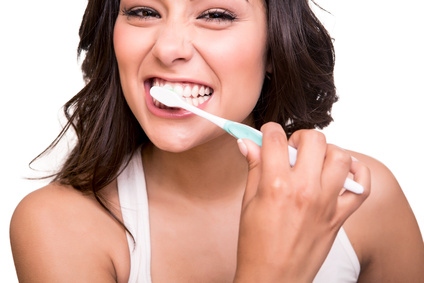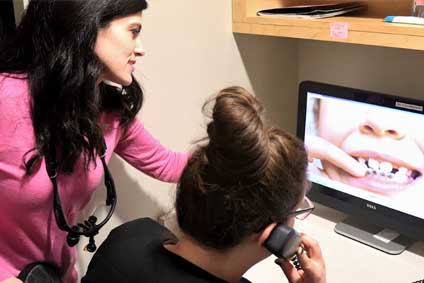
Brushing the teeth, Morning or Evening?
April 7, 2022The COVID-19 pandemic brought a lot of unprecedented changes. Some positive and some negative. Therefore, looking from the perspective of positivity, telehealth is the best thing that ever happened to the healthcare system.
Well, within telehealth, you will find the option of Teledentistry. That is where this article will focus on. Are you ready?
Let’s get started;
What is Teledentistry?
Teledentistry is a practice that uses telecommunications and information technology for public awareness, consultation, and education for dental care services. It’s growing fast, especially after the wake of the coronavirus pandemic.
You can practice teledentistry in different ways. For example setting up a live video, sending a text message, or making phone calls between the patient and dentists or the dental hygienist.
Teledentistry also applies in keeping the patient’s records and documentation, then forward to the dentist for remote monitoring of the patient’s wellbeing.
When the dental office is brought closer to the clients in a van or trailer, it’s part of teledentistry. The virtual model of teledentistry is the use of portable dental equipment which is easy to transport and install elsewhere.
History of Teledentistry
Telecommunication was practical prehistorically. Its history can be dated back to a thousand years ago, when communities could use smoke signals to warn the neighborhoods about the ravaging plague.
In addition, accessories like drums, horns, and many more were traditionally used to communicate about the birth or death of the royals. Looking from a broader perspective, that is part of telecommunication. Light reflection using mirrors was also a popular way for longdistance medical communication.
Indeed, things have changed over the years, and telecommunication is now a sophisticated entity. Generally, telehealth evolved with telecommunication as a significant entity in health care. However, when was the first time that the modern teledentistry became effective?
In 1994 modern teledentistry had the first major successful use in the United States Defense Department. The teledentistry program was instituted to improve remote personnel’s access to dental care services. The project aimed to improve the patient’s dental health, promote communication between labs and dentists, and increase dental health awareness.
Since the major use of teledentistry n 1994, the program has reported massive success in reducing dental care costs and helping the clients be served effortlessly from their remote areas. There have been other major teledentistry endeavors that have made the field what it’s today. Honestly, the future of teledentistry is bright and promising.
What Can Teledentistry Do?

Remote assessment
Remote patient assessment is possible with teledentistry. Patients can make images and videos and send them to their dentist. The dentist will then respond by filling the patient’s records and examining the sent file. When the treatment plan is ready, it’s sent to the client.
Prescriptions
Over-the-counter prescriptions are not encouraged because it leads to drug resistance and even unnecessary drug abuse.
Teledentistry is readily available to offer the proper prescript for patients to overcome dental problems such as jaw pain.
Through the virtual visits, dentists can assess the patient’s condition and institute the right treatment. If the patient is in a worse state, the dentist can directly give a prescription to calm the patient until they meet physically for more focused treatment.
Supervision
It’s costly and tiresome to always walk into the dental office for a regular check-up. How do you find it going for a 5-minute review by an orthodontic specialist? You need a cost-effective and time-saving method to track your treatment even when you’re a mile away from your dentists.
Teledentistry is the best miracle that has ever happened in the dental industry. It checks progress and supervises patients’ health remotely. There is no need for the dentist to summon the patient more often unless there is a major concern.
A remote dentistry is an excellent tool for patient care interaction. It’s cheap and straightforward. Therefore, you don’t need inconvenient and costly in-person visits.
Patient education is essential for proper prevention and treatment strategies, and teledentistry is a system for increasing patient awareness. We are happy to say that with LedgerCover solution, dentists can easily promote their client’s oral health and hygiene. Patients can save time by accessing online consultations from the comfort of their home, enjoy reward system that works as a saving for dental fees and learn from educational contents.
Does Teledentistry Work?
Generally, whether teledentistry works depends on what you want to achieve and if you’re working with the right professionals.
There is a lot of evidence that supports the effectiveness of teledentistry. For example:
- In 2017 the American Medical Director Association identified that teledentistry in nursing homes is accurate when diagnosing various dental pathologies. It also promotes early intervention of dental problems, and the patients can maintain good adherence with regular check-ups.
- According to the study published in 2017 in the journal of Pediatric dentistry, it was established that the e-access health network is as effective as the in-person check-ups for diagnosing tooth cavities.
- Telehealth and telecare are 88% effective in diagnosing mouth lesions. Therefore, you don’t typically need in-person visits to consult an orthodontist.
Teledentistry is a viable option for remote screening, consultation, diagnosing, developing treatment plans, offering prescriptions, and ensuring proper patient monitoring through regular online check-ups.
Importance of Teledentistry

Indeed, Teledentistry can’t replace in-person dentistry wholly. However, it is a more accessible and affordable option that offers many benefits to its users. When teledentistry is used appropriately in combination with professional dentists, it can:
Offer Precise Treatment
When the dental labs or the dentists are consulted with information that completely describes the patient’s case, an accurate diagnosis is made, and it’s easy to give a precise custom-tailored treatment.
For example, an orthodontist can review the 3D model x-ray sent through the internet and create a precise treatment plan for the patient and local dentist to follow.
Reduce Cost and Promote Early intervention
Teledentistry eliminates the need for traveling. That means you can avoid transportation costs and have enough time to work on other money-yielding exercises immediately after the consultation.
Teledentistry also helps dental specialists to see a significant number of patients per day in a time-efficient manner.
Ultimately, there is a belief that teledentistry encourages clients to attend regular check-ups and seek advice from dental experts before their conditions worsen.
In simple words, teledentistry help in early intervention, contributing to lowering the overall treatment cost. It’s costly to treat a complex dental disease that has already spread to other vital organs and tissues.
Improve Accessibility
Teledentistry makes dentistry more accessible and helpful for people living in remote areas. Some people can’t find a local dentist easily. If you fit into teledentistry, you won’t be left out of providing universal healthcare coverage.
What Can Teledentistry Do?
It’s hard to predict the future of teledentistry, but it’s clear that the current telehealth program will continue to spread and gain enormous applications in dentistry.
In addition, the teledentistry is anticipated to eliminate barriers facing the underprivileged communities when trying to find dentist’s help. Therefore, it will ensure equitable distribution of healthcare services.
The quality of dentistry is now improving, especially with the betterment of camera technology that helps in capturing detailed pictures. Camera advancement helps dentists in making wise decisions for proper treatment.
Although most dental offices have not started using teledentistry services, many have shown a great interest in the field, and everyone is now working towards it.
Although most dental offices have not started using teledentistry services, many have shown a great interest in the field, and everyone is now working towards it.
Please consult us if you want to know the proper steps you can take with teledentistry. Our research and development team’s goal is to create the best solution for teledentistry in Canada to promote oral hygiene and motivate users toward preventive care through a reward system.

